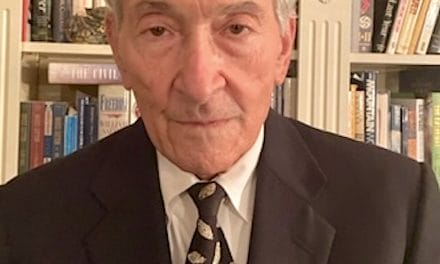Dear Friends,
I would like to share with you an ancient and very special custom of the Jewish community of Rome. They keep this tradition since they were exiled there from the land of Israel, almost 2000 years ago.
On the night of Tisha B’Av, the Jewish national day of mourning for the destruction of the holy temple in Jerusalem, the synagogue is darkened and each member of the community who comes to the synagogue receives a long candle to use during the evening service and the reading of Eicha, the book of Lamentations.
The candle must be very long, so there will be something left from the candle at the end of the service.
For what purpose?
Their custom is to use the leftover of the candle from Tisha B’Av to be the Shamesh candle to light the Menorah on Chanukah!
Tisha B’Av is the day we commemorate the destruction of the Beit Hamikdash, our holy temple, and Chanukah is when we celebrate the dedication and renewal of the work at the Temple with lighting the Menorah.
The candle that accompanies us in grief and sorrow is the same candle that also accompanies us in joy and celebration.
We know that from the trouble and sadness itself, there will be a new energy of salvation and redemption.
This year Tisha B’Av sadly, we don’t need reminders or stories from the past to look back and mourn. Unfortunately this year the Jewish people experienced and still experiencing what true evil is capable of.
Although we are still in the midst of it, we all know what history shows and what the promise of Judaism proved, that this candle of mourning will turn into a candle of great light, the pain and sorrow will turn into blessings of happiness and true peace.
It is customary to rise Tisha B’Av afternoon and clean the house, showing our renewed faith and hope. On the positive side, Tisha B’Av marks the birth and potential of redemption by the righteous Moshiach, a most important Jewish principle: “I fully believe in the coming of Moshiach, and though he may take time, each day I eagerly anticipate his coming!” (Maimonides) Last but not least, we conclude the Lamentations on a high positive note as we loudly declare: “Return to us, O G-d, and we will return to You; renew our days as once before!”
Please take to heart this message Rabbi Israel Rubin wrote sharing the
Rabbi Israel Rubin wrote this creative article about the two sides of Tisha B’Av based on a Talmudic story at the end of tractate Makkot. It was first published in The Jewish World, on two sides, front on back, of a corner of the page: black background with white text on front, and black text on white background on the other side of the page.
Rabbi Groner, the Lubavitcher Rebbe’s secretary, called to say that the Rebbe very much enjoyed this article. It is easy to understand why, as it is typical of the Rebbe’s teaching, to seek the positive within the negative, find presence in absence, meaning in mundane. And the Rebbe loved relevant, creative, current Torah application that would reach.
This whole idea was based on the Rebbe’s farbrengen. In fact, the Rebbe’s farbrengen in summer of 1964, where the Rebbe explained this Talmud story at great length, with much detailed questions, and passionate answers – was a turning point in my father’s (Rabbi Israel Rubin) Talmudic study, as it was a dazzling eye-opener for him about the meaningful connections between the personal lives and public Torah teachings of these Talmudic scholars. This has since become a cornerstone of my father’s style of Torah learning, especially in his scholarly book on the Haggadah and in his Pirkei Avot commentary.
The Rebbe was seeing and explaining Torah from the lens of human experience, Torah as intertwined with life, personalizing it. It jumpstarted my father’s avid interest in this area and style of Torah learning and teaching, which he continued to develop from his yeshiva years throughout his decades as a communal rabbi, school dean, and author.
My father traces his creative “The Torah Times” newspaper, his scholarly book examining the background of the Haggadah story of the Five Sages at the all-night Passover Seder, his avid interest in and in-depth commentary on Pirkei Avot – it all goes back to this single farbrengen, where the Rebbe (after 20 questions exploring the Talmud stories) connects Rabbi Akiva’s unique perspective and details and nuances in the Talmudic retelling, to Rabbi Akiva’s personal life-story, his background and religious journey.
commentary By Rabbi Mendel Rubin
Shabbos House, Fuller Road, Albany








